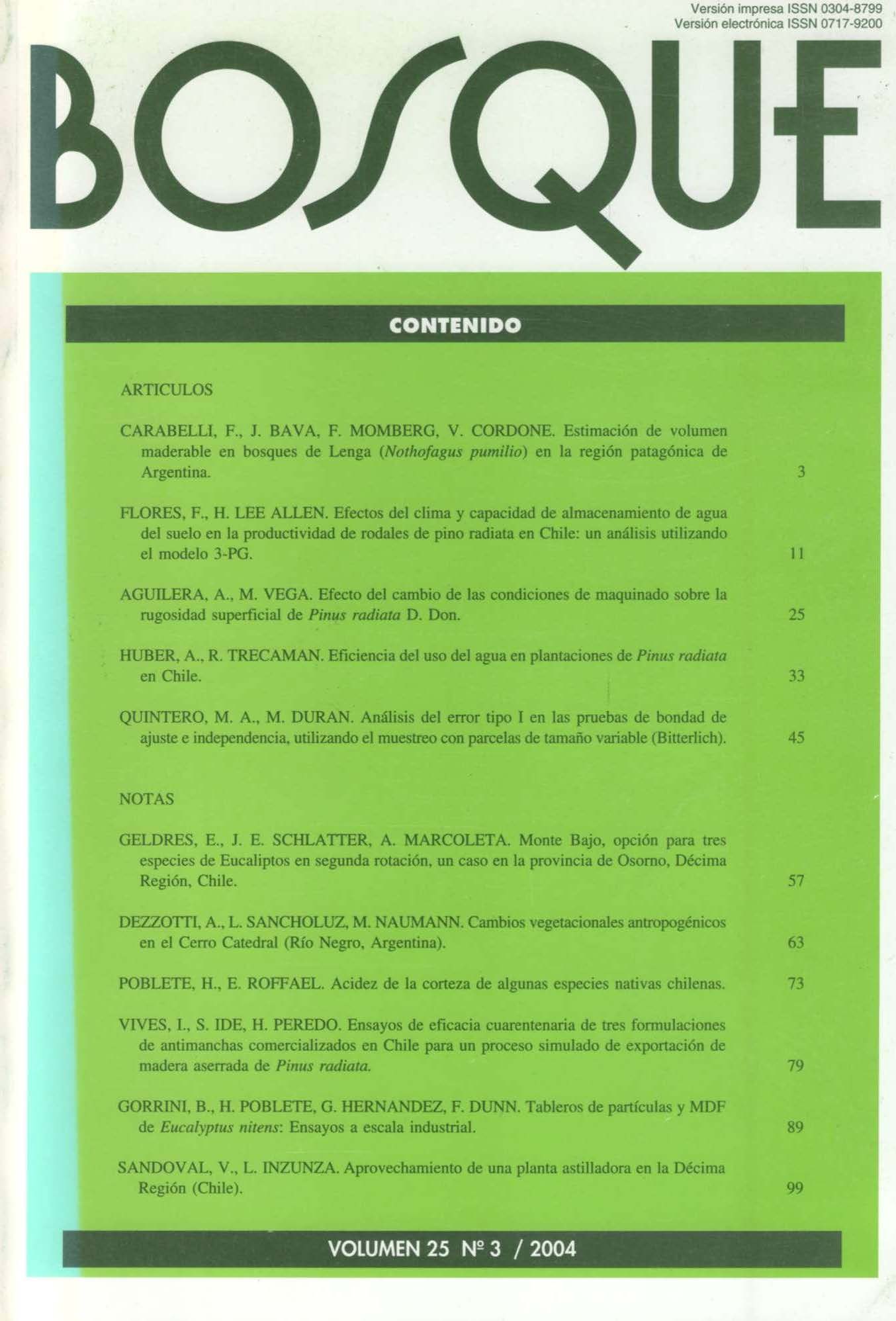Main Article Content
Dec 31, 2004
Abstract
In the X Region large eucalyptus plantations have been established, and these are currently harvestable. The growers will now have to decide between the alternatives of either establishing a new forestry crop or managing eucalyptus under a coppice regime. Notable amongst those species that have the ability to sprout and form low forest are Eucalyptus globulus and E. viminalis. A management trial was carried out for a 8.0 ha coppice of mixed E. globulus, E. viminalis, and E. regnans, harvested at eight years of age. The trial was located near Huilma, Province of Osorno, where the soil is of the Crucero series (red clayey soil), and this was evaluated four years after the harvest. The species showing a possibility of management under a coppice regime were E. globulus and E. viminalis. The first of these has a better volume production: 150 m3/ha in four years. If the intended purpose is use as pulp or firewood, it is recommended that three sprouts per stump are left 18 months after harvesting. However, if the use is as sawn wood, then both species need to be managed with one or two sprouts per stump.


